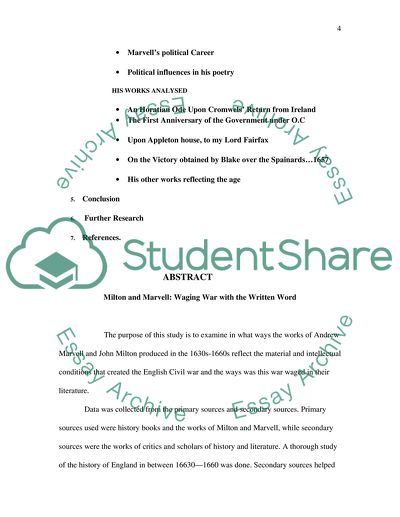Cite this document
(“Milton and Marvell: Waging War with the Written Word Dissertation”, n.d.)
Milton and Marvell: Waging War with the Written Word Dissertation. Retrieved from https://studentshare.org/history/1541904-milton-and-marvell-waging-war-with-the-written-word
Milton and Marvell: Waging War with the Written Word Dissertation. Retrieved from https://studentshare.org/history/1541904-milton-and-marvell-waging-war-with-the-written-word
(Milton and Marvell: Waging War With the Written Word Dissertation)
Milton and Marvell: Waging War With the Written Word Dissertation. https://studentshare.org/history/1541904-milton-and-marvell-waging-war-with-the-written-word.
Milton and Marvell: Waging War With the Written Word Dissertation. https://studentshare.org/history/1541904-milton-and-marvell-waging-war-with-the-written-word.
“Milton and Marvell: Waging War With the Written Word Dissertation”, n.d. https://studentshare.org/history/1541904-milton-and-marvell-waging-war-with-the-written-word.


